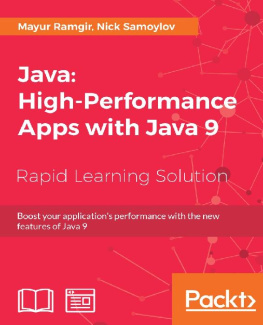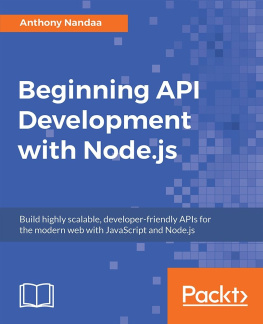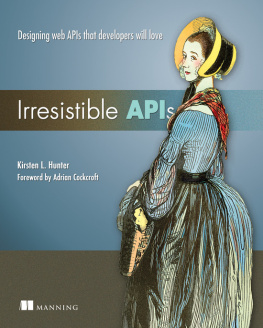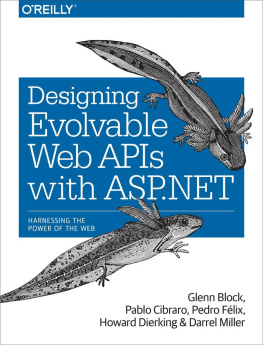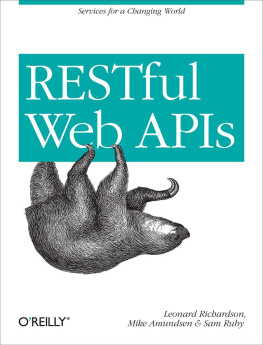Designing Evolvable Web APIs with ASP.NET
Glenn Block
Pablo Cibraro
Pedro Felix
Howard Dierking
Darrel Miller
When Tim Berners-Lee first proposed the Web in March 1989 at CERN, he set in motion a social revolution of creativity and opportunity that has since swept the world, changing how our society works, how we interact, and how we perceive our role as individuals within our society.
But he also set in motion an equally impressive technological revolution in how engineers think about and build software and hardware systems for the Web. The notion of a web server has changed from a standalone computer sitting in a box to a completely virtualized part of a global cloud infrastructure in which computation moves where it is needed at a moments notice. Similarly, web clients have changed from the traditional desktop PC with a browser to a myriad of devices that sense and interact with the physical world and connect with other devices through web servers sitting in the cloud.
If we think about the changes that the Web has undergone, what makes them so breathtaking is not merely that theyve happened at a dizzying pace, but also that theyve happened without central control or coordination. In a word, it is evolution in action. New ideas and solutions are constantly introduced to accommodate new demands. These ideas compete with old ideas; sometimes they win and take hold, and other times they lose and fall by the wayside.
Evolution is as integral a piece of the Web as it is of nature. And just as in nature, individual components that are better suited to accommodate change have a greater chance of staying relevant and thriving over time.
In addition to the changes in what constitutes web servers and web clients, a sea change is taking place in how they interact with each other. Web servers used to serve HTML that was rendered by clients as web pages. Similarly, web clients would submit HTML forms to the server for processing, be it to process a pizza order, insert a blog entry, or update an issue in a bug tracking system.
This model really only exercised a fraction of what HTTP allows you to do by focusing on the use of HTTP GET and POST methods. However, from day one HTTP has defined a much broader application model for interacting with and manipulating data in general. For example, in addition to the classic GET and POST methods, it defines methods such as PUT, DELETE, and PATCH that allow for programmatic manipulation of and interaction with resources.
This is where web APIs come in: they enable web servers to expose the full HTTP application model, allowing programmatic access to resources so that clients can interact with and manipulate data in a uniform manner across a wide variety of scenarios.
There are two key drivers for the shift toward web APIs: HTML5 and mobile applications. Both leverage the computational powers of the client platform to provide engaging and fluid experiences while retrieving and manipulating data through backend web APIs. In short, web servers are changing from serving only static HTML to also providing web APIs that allow clients to interact programmatically using the full power of the HTTP application model.How to actually build such web APIs is where this book comes in. In short, it is for anyone who is building web APIs targeting HTML5 applications as well as mobile applications. It provides not only a great introduction to web APIs but also a practical set of guidelines for how to build them using ASP.NET Web API. In addition, it goes into great detail describing how ASP.NET Web API works and also serves as a reference for how it can be extended via HTTP message handlers, formatters, and more.
But the book goes beyond just showing the code or explaining the framework. It also introduces you to powerful techniques such as test-driven development (TDD) and behavior-driven development (BDD) for writing applications that can be tested and verified to function as expected.
What makes this book stand out, however, is that it doesnt just provide a point in time set of guidelines for how to build a web API. It takes you on a journey through how to design a web API that can evolve with changing demands and constraints. This idea of addressing evolvability goes to the very heart of how the Web works.
Building web APIs that can function effectively in this environment is not a straightforward proposition. One thing that is clear is the importance of accepting from day one that any web API will have to change, and that no one is in control of all parts at any given time. In other words, you cant just design a new version of your system and scrap the old one without losing existing users or causing frictionyou have to move the system forward bit by bit while at the same time allowing both older clients to continue to function and newer clients to take advantage of the new features.
However, building software that is flexible and able to evolve remains a challenge. This book provides a great overview of how to build modern web applications that can change and evolve as demands do. It does so by mixing web APIs with hypermedia, which is a new and exciting direction for web applications.
The notion of hypermedia is both new and old. We are all used to browsing web pages, looking for information and diving into an aspect by clicking a link that takes us to a new page with more information and yet more links. As the information changes or evolves, new links can get added or existing ones modified to reflect that. The new links can prompt you to explore new information and dive into additional areas.
When you start merging web APIs with hypermedia, you get a powerful model for enabling applications to change and adapt in a similar way, how they interact with the server. Instead of having a fixed flow of actions baked into clients, they can now modify their actions based on the links made available in order to evolvein short, they are able to adapt to change.
What makes this book relevant is that it provides a comprehensive overview of the state-of-the-art methods for designing web APIs that can adapt to the changing demands of providers and consumers. By introducing concepts such as hypermedia-driven web APIs with TDD, it provides an excellent starting point for anybody building web APIs.
As part of the team that built ASP.NET Web API, I have had the pleasure to work with the authors of this book. The group stands out, not just because of their collective experience in building frameworks, but also thanks to their vast real-world experience in building practical systems based on HTTP concepts. They have all provided many valuable inputs and suggestions that have contributed to ASP.NET Web API becoming a popular framework for building modern web applications.
In particular, I have enjoyed working with Glenn Block, who joined the project early on and really drove the emphasis on community engagement as well as the importance of dependency injection, TDD, and hypermedia. Without his contributions, ASP.NET Web API would not be where it is today.
If you are building or thinking about building web APIs, you will enjoy this book not only as a learning tool but also as a practical guide for how to build modern web applications based on ASP.NET Web API. It offers a wealth of information and guidelines for how to design with evolvability in mind by looking at complex issues in new and innovative ways. I, for one, am looking forward to seeing how this will evolve in the future!







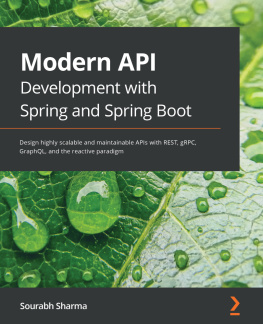

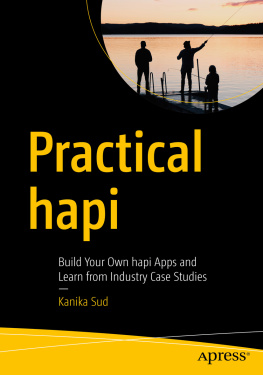
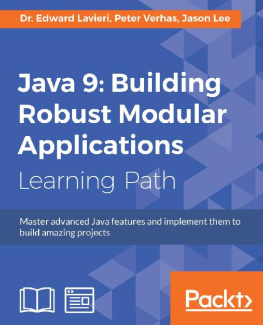
![Elder Moraes [Elder Moraes] - Java EE 8 Cookbook](/uploads/posts/book/119370/thumbs/elder-moraes-elder-moraes-java-ee-8-cookbook.jpg)
![Mario-Leander Reimer [Mario-Leander Reimer] - Building RESTful Web Services with Java EE 8](/uploads/posts/book/119360/thumbs/mario-leander-reimer-mario-leander-reimer.jpg)
